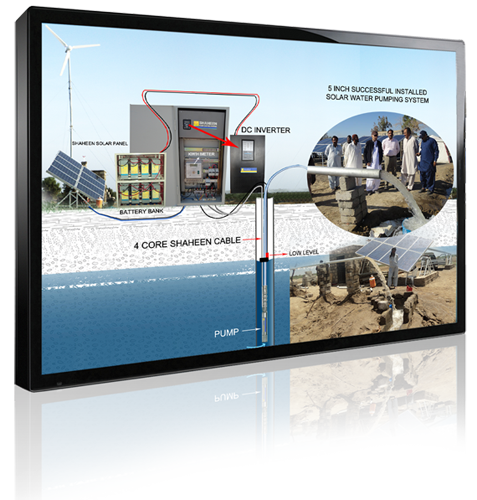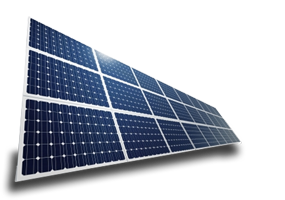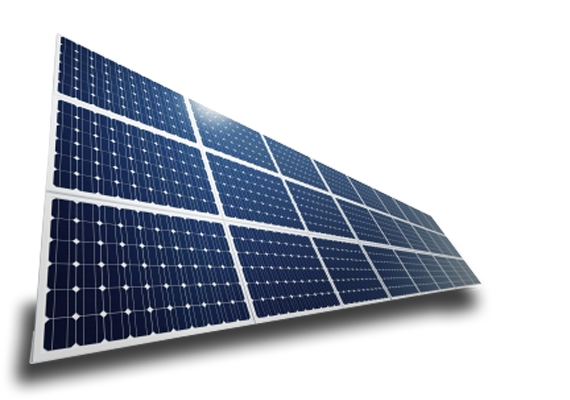What is Solar Energy?
For billions of years the sun has been producing vast amounts of
power through nuclear fusion. This is the process by which four
hydrogen atoms combine to produce one helium atom. This is the
mechanism that the sun uses to generate its energy.
The amount of energy from the sun that reaches the Earth is vast.
All the energy that can be produced by the non-renewable reserves of
the world like petroleum, coal, and natural gas is equaled by just
twenty days of sunshine.
Short answer: the light and heat provided by the sun. A
slightly longer answer: after running the gauntlet from an average
of 93 million miles away, through the various layers of atmosphere
and atmospheric conditions (clouds, pollutants, dust and the like),
about half of the solar energy is absorbed by water and land, with
the other half reflected and re-radiated back into space. The half
that makes it is absorbed by oceans, land masses and plants; in the
ocean, the energy drives heat and wind-driven currents (like the
Gulf Stream); on land, the energy is absorbed and creates heat, and
the little bit that's left is absorbed by plants and converted to
chemical energy through a process we all know as photosynthesis.
THE POWER OF SUN
If measured outside of our atmosphere the energy that reaches
Earth has about 1,300 watts per square meter. This energy is in
radiant form and about a third of it is reflected back into space. A
certain amount is absorbed by the atmosphere which is the primary
cause of weather.
Ultimately the energy that reaches the surface of the Earth
averages out to about 1,000 watts per square meter on a cloudless
day. Of course some arid and desert areas receive more. This means
that on a 24-hour day the energy that reaches earth is equivalent to
one barrel of oil every year per square meter.
These numbers stand for the maximum energy that reaches the Earth
from the sun but current technology allows only a small amount of
this energy to be collected and converted to other forms of energy
which can be more readily used.
HAVE A USED ANY KIND OF SOLAR ENERGY BEFORE?
Solar power has been harnessed by humans since ancient times. The
technology that has been used to harness solar energy has been
evolving since then. Since the use of the oculus at the Parthenon in
Rome delighting techniques have been used by ancient architects.
Natural light has been dominant method in the history of lighting.
During the industrial revolution the use of coal had increased
steadily and has shifted from wood and other kinds of biomass to
fossil fuels. In the 1860?s there was the expectation that coal
would soon be exhausted as a power source so there was research
conducted into solar power. However during the early part of the
20th century the development and research of solar power slowed and
stopped because of the increasing availability and cost
effectiveness of coal and petroleum at the time.
In 1973 during the oil embargo and the 1979 energy crisis there was
a review and reorganization of energy policies around the world and
especially in the industrialized countries. This brought new life to
solar power research and development of solar power technologies.
THE FUTURE
The technologies used in harnessing solar power are on the verge
of rapid growth and development in the 21st century. Architects and
engineers are increasingly aware of the advantages of building in
passive solar power into their designs.
The cost of solar water heaters is becoming increasingly competitive
with more conventional water heaters in certain areas. Photovoltaic
technology is slowly becoming a cheap way of generating electricity.
ENERGY OUR ADDICTION TO FOSSIL FUEL
Of course the expansion of solar power industry will encounter
some problems but these can be overcome. In spite of difficulties
put up by some utilities for grid connected photovoltaic systems
there will be increased use of these technologies and solar power
will be increasingly crucial in ending our addiction to fossil fuels
and fighting the threat of global warming and assuring a future
based on renewable and clean energy.





 state-of-the-art designSolar Water Pumping System
state-of-the-art designSolar Water Pumping System Wind Power Use itdon't let it blow away!
Wind Power Use itdon't let it blow away!







 Most Experienced inSolar, Wind and Hybrid Technology
Most Experienced inSolar, Wind and Hybrid Technology SOLARBattery BanksShaheen Enterprise
SOLARBattery BanksShaheen Enterprise Water PUMP SystemShaheen Enterprise'sFeature Project
Water PUMP SystemShaheen Enterprise'sFeature Project